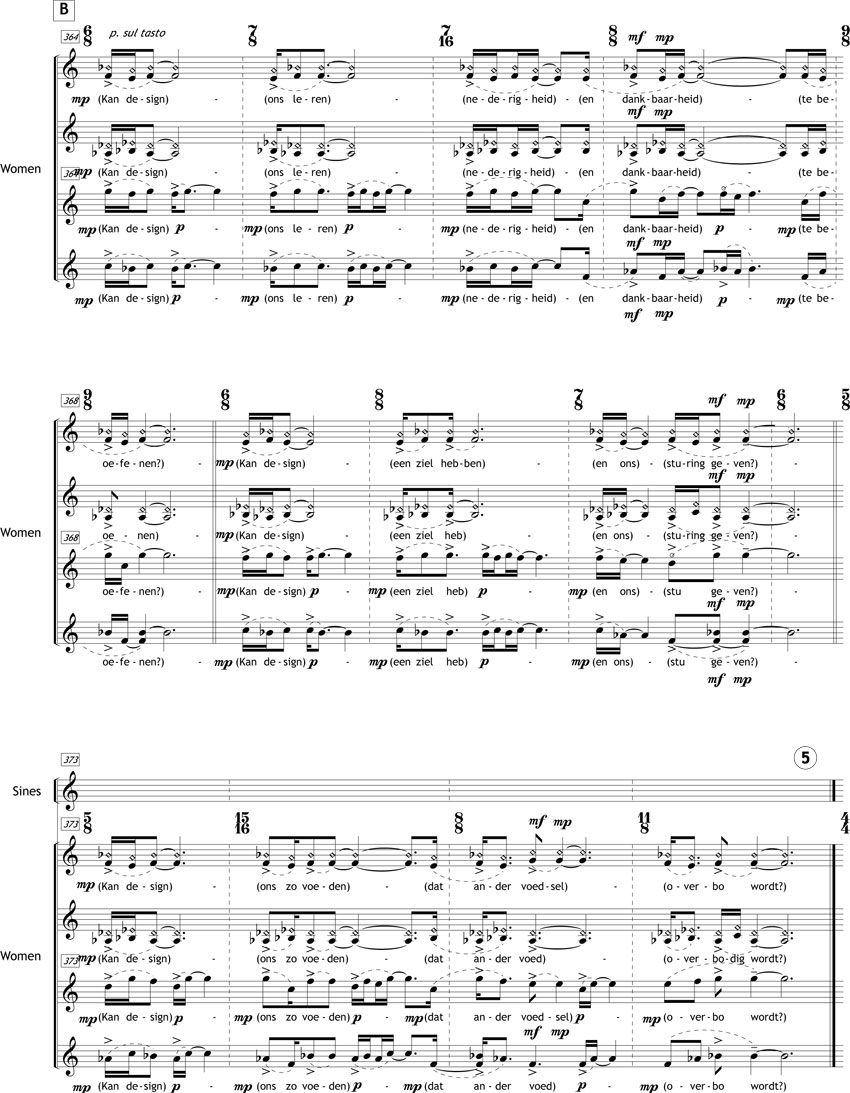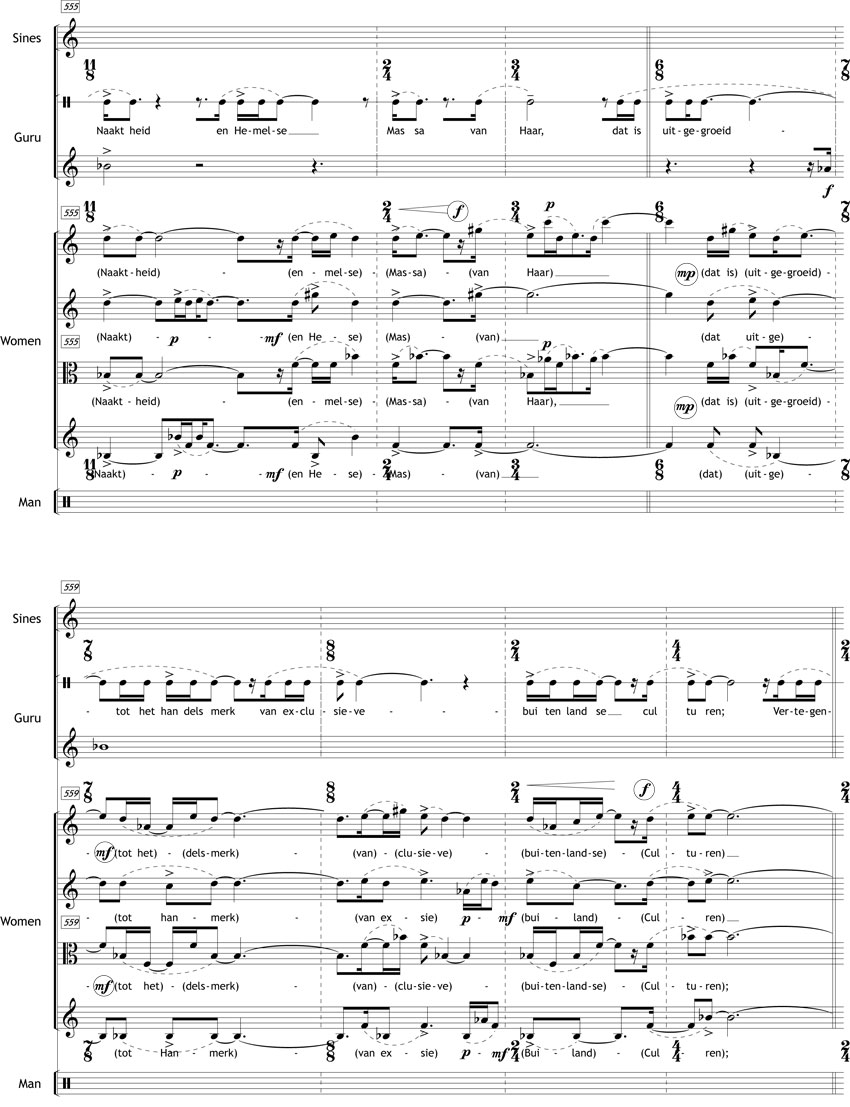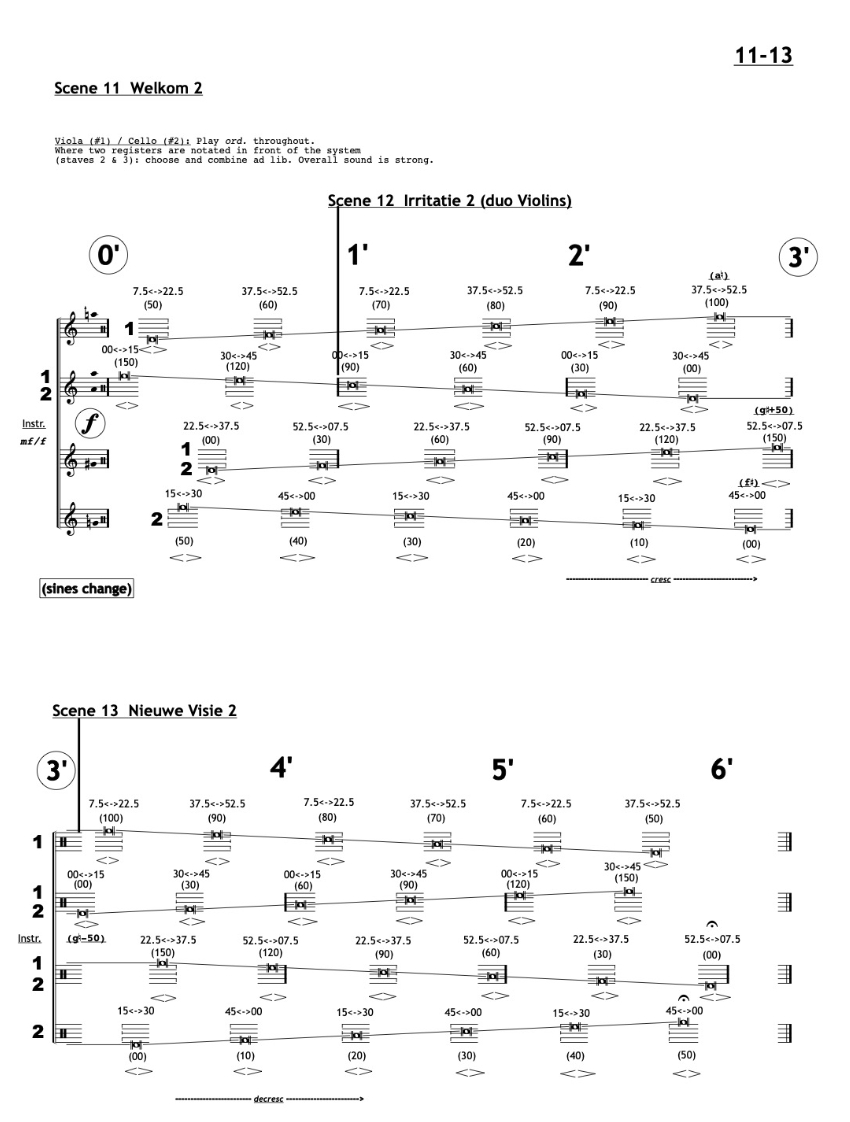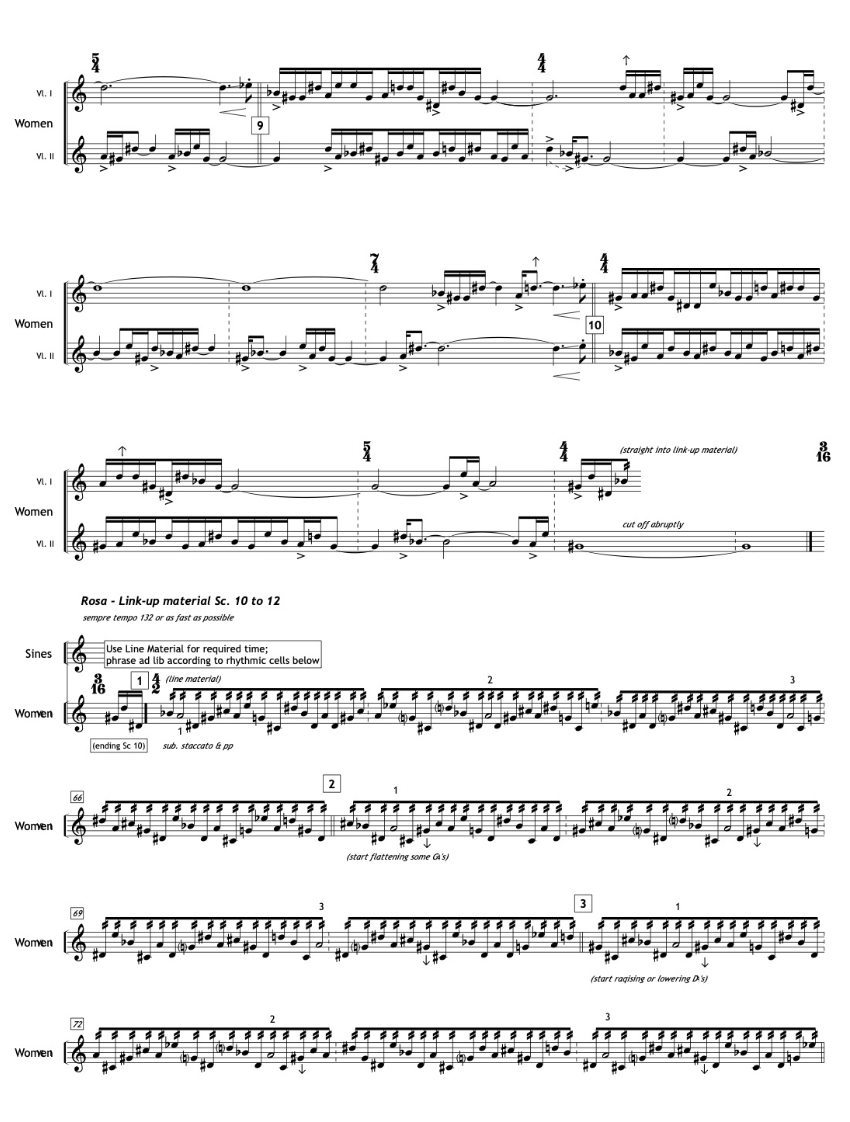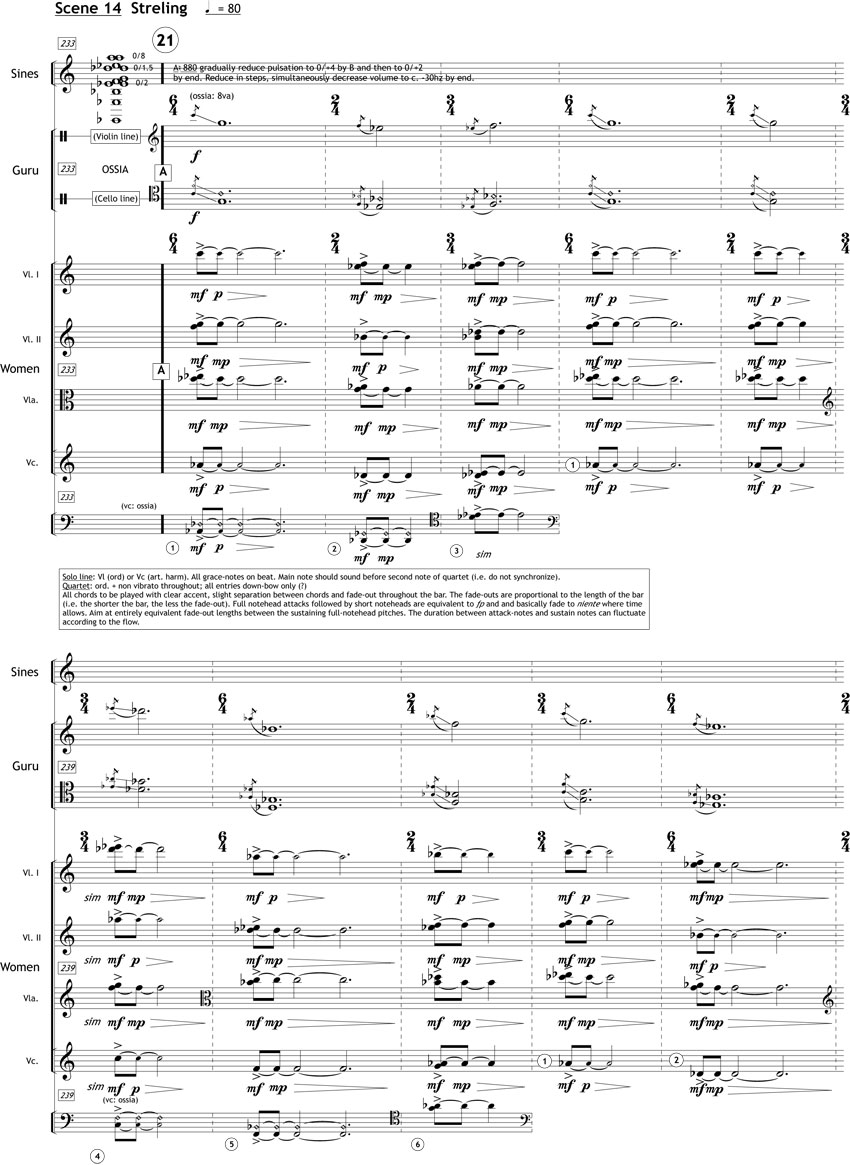No 58 Comfortzone (2015)
For String Quartet, Ceramic Percussion, Narrator & Sinewaves
Commissioned by: Ragazze String Quartet, Via Berlin & Orkater, with financial support from the Netherlands Fund for the Performing Arts
First Performance: September 19 2015, Toneelschuur, Haarlem
Instrumentation: String Quartet, Ceramic Percussion, Narrator & Sinewaves
Duration: 80’
Special Features: all instruments amplified throughout, uses click tracks
Info/Program note:
Comfortzone (2015) is my first, and so far only piece written specifically for music theater. The work was written in 2015 for the Ragazze Quartet and the theater companies Via Berlin and Orkater and was premiered in September of that year.
A prominent part of Comfortzone deals with the relationship between spoken word and music. Contrary to what is mostly deemed wise, but knowing that I had a crack team with a trained musician as primary actress I asked for as much text as possible, feeling the need to find a way for spoken word and music to co-exist on an equal plane. Although I had my reservations about the innate theatricality of my own work I had noticed in other music theater works (all throughout music history in fact) that the element ‘spoken text’, especially with regards to notation, was often the one most shrewdly avoided by composers. And, if employed, generally resulted in the music immediately becoming secondary to freely-delivered speech, functioning at the most as a form of emphasis or interpunction. Generally a lull-point in most pieces, with the few exceptions merely proving the point. Though warnings about ‘never try to notate the spoken words of the actors or try to compose them contrapuntally into the musical texture’ quickly popped up I eventually decided to do exactly that; the phrasing of Language being an interest anyway and the compositional challenge seemingly worthy enough to put my chops in to.
Hence a very difficult piece for all resulted, based to a large degree on speech imitation. The text, which basically deals with a clash of cultures - represented by a philosophizing Trendwatcher (the ‘Guru’), her Followers (four society ladies) and a mute ‘Outsider’ (a kind of refugee, modeled loosely on Hesse’s Steppenwolf) - is followed to the T, with every aspect of the Guru’s ideology translated into reality. Where the text calls for ‘only natural, earth-bound materials’ a large table is littered with all kind of ceramics to be played on; where ‘no mixing’ is preached no mixing occurs and everything is ‘white’; where poetic ‘richness’ is expressed ‘richness’ is translated into the instrumentation etc. Hence the String Quartet also plays tricky ensemble percussion and the part for the Guru is filled to the brim with detailed metric notation. For myself, the aspect of finding a good way to notate speech so that it could be used in a musical way (and then internalized in order to be forgotten again) was by far the hardest job.
The work is set up in three Acts, dealing consecutively with Ideology, Confrontation and Fate. Not wanting to debase a difficult topic (namely that any finger pointed at an ‘outsider’ immediately points back at the pointer), the work plays out as a sequence of visual, sometimes ritualized tableaux, in which symbols, images and metaphors are intended to do the talking instead of a clear story-like narrative.
Eventually the confrontation of the two worlds can of course never be resolved, the ideology of the beautiful can’t withstand reality and fate unfolds as it must: a kind of ‘gruesome beauty’ results, as one critic pointed out.


